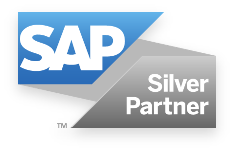Should you run SAP Business One in the cloud?

Looking to buy business software in 2017? Chances are, one of the questions you’ll ask during the decision-making process will be: “Can we run this in the cloud?”
And that’s as true for a major software investment like ERP as it is for a scheduling tool or instant messaging app. Our world is becoming steadily more and more cloud-centric – according to a recent study from Cisco, cloud will account for 92% of all data centre traffic by 2020. That means less legacy software on-premises, and more core business management software like ERP delivered from cloud data centres.
However, just because you can doesn’t mean you should. In this blog, we’ll look at some of the different ways you can deploy SAP Business One, how to know if cloud is right for you, and the other factors a buyer in the 2017 ERP market should be aware of.
{{cta(’45a3f3e9-30bf-40fc-a307-bc1cafcf8b7b’)}}
SAP Business One in the cloud: Your options
On the most basic level, if you’re weighing up whether to run SAP Business One in the cloud or on-premises, the options you’ll have to consider are:
- Whether to deploy the regular version of SAP Business One – now in version 9.2 – as an on-premises solution (meaning it sits on a server in your own office).
- Whether to use SAP Business One Cloud/OnDemand, which is SAP’s own SaaS variation on the above. As SAP’s marketing will tell you, this is a quicker and simpler option as there’s no in-house IT to set up and maintain, but it may be less flexible in some contexts.
- Finally, you can work with a SAP partner to install the regular version of SAP Business One as a hosted solution in an external, managed data centre or cloud environment. This means no IT to manage but full scope to use SAP Business One in the same way you would on-premises (depending on your arrangements with your provider).
The right option for you will depend on a number of factors, from the functionality you want (some customisation may not be possible in the cloud, for example) to the size of your business and the way you want to pay for the solution (such as whether you’re happy to invest in on-premises hardware).
As a SAP Business One provider ourselves, we mostly deliver the software as an on-premises or hosted solution – but for some buyers, cloud is a more suitable option.
Why ERP in the cloud may not be such a good idea
And, to return to our original point, many now assume cloud to be the de facto preferred option, too. To which we’d counter that it may not be – and that you should think very carefully about what you want to achieve before deciding that ERP, like the other apps you use, is something that belongs in the cloud in the long run.
Why? Because ERP is built to be flexible. There are very few limits to what you can achieve with an on-premises SAP Business One implementation, whether you need to integrate it with legacy systems, connect to live data streams from your factory floor, or whatever else. Some of this is possible in the cloud, too, but the use of cloud infrastructure is inherently less flexible and less customisable than the on-premises equivalent.
Expectations vs reality in the cloud
We’d also point out that a lot of the benefits associated with the cloud by stakeholders like finance directors and operations managers are actually present with a hosted solution, too. You can avoid investing in hardware setup and maintenance, and deliver low-latency remote access, without necessarily using SAP Business One Cloud/On Demand or even a cloud environment at all.
Some people think that cloud is the future, and that on-premises or colocated infrastructure has had its day. We don’t think that’s an accurate assessment – many big-name companies are actually moving away from cloud, and many are now of the opinion that cloud as a delivery model isn’t always as cost-effective as building their own infrastructure.
In the SME world, too, we’ve known more than a few companies that have gone to great lengths to move their entire IT estate to the cloud only to retrace their footsteps a little later down the line – having found that some things (if not all) just didn’t work as well in the cloud as on-premises.
Remember also that a monthly fee can rise at a moment’s notice, as happened for users of Microsoft’s cloud services on January 1st – so measuring TCO and ROI in the cloud may not be as simple as it sounds.
Implementing business software that really delivers a return is a complex process. Choosing the cheapest and most fashionable option is never the right way to go about it. We’ve created a guide that’ll help you make sure your SAP Business One implementation is a success.
{{cta(‘f477a860-0b31-4862-b131-e4cabcc562ed’)}}
{{cta(‘f870d25b-78aa-4718-84c2-38fd8645b19a’)}}

